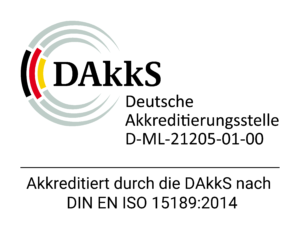FOR EXPECTANT PARENTS
SEARCH
Information on X and Y chromosomal disorders
The two sex chromosomes (X and Y) determine whether an individual is male or female. X and Y chromosomal disorders occur if there is a missing, extra or incomplete copy of a sex chromosome. The X,Y-Harmony® Test can be used to determine the risk of XXX, XYY, XXYY, XXY (Klinefelter syndrome) and monosomy X (Ullrich-Turner syndrome). These diseases differ greatly in their severity. The majority of those affected suffer, if at all, from minor mental or behavioural impediments and infertility1, 2, 3.
When deciding on the Harmony® Test option, you should be aware that the inclusion of sex-chromosomal disorders in the analysis (XY analysis) leads to a significant increase in the false positive rate. Whereas the total false positive rate for trisomy 21, trisomy 18 and trisomy 13 is less than 0.1% (NEXT-Study 4), the XY analysis results in a false-positive rate of approximately 0.8%. This is primarily due to false positive results for monosomy X. Information about the biological cause underlying this phenomenon can be found in the publication of Russel and colleagues 5. If you want to find out the sex of your unborn child, you can chose the test option “trisomy 21, 18, 13 incl. determination of fetal sex”. With this option no genetic analysis of X and Y chromosomes is performed, therefore the false positive-rate is not increased in comparison to the test option “trisomy 21, 18 and 13 without XY analysis”.
If you are interested in the additional tests for sex chromosome disorders, please consult your physician to determine whether the test is suitable for your pregnancy.
Guides for X/Y chromosomal disorders provided by the charity for rare chromosomal disorders “Unique”: https://rarechromo.org/
- U.S. National Library of Medicine. Genetics Home Reference. Klinefelter-Syndrome. ↩
- U.S. National Library of Medicine. Genetics Home Reference. Turner-Syndrome. ↩
- Jones, K. L., & Smith, D. W. (1997).Smith’s recognizable patterns of human malformation. Philadelphia: Saunders. ↩
- Norton ME ,Jacobsson B, Swamy GK, Laurent LC, Ranzini AC, Brar H, Tomlinson MW, Pereira L, Spitz JL, Hollemon D, Cuckle H, Musci TJ and Wapner RJ: Cell-free DNA Analysis for Noninvasive Examination of Trisomy. N Engl J Med. 2015, Apr 1, DOI: 10.1056/NEJMoa1407349 ↩
- Russell LM, Strike P, Browne CE, Jacobs PA: X chromosome loss and ageing. Cytogenet Genome Res 116:181–185 (2007) ↩
FOR EXPECTANT PARENTS
SEARCH
Information on X and Y chromosomal disorders
The two sex chromosomes (X and Y) determine whether an individual is male or female. X and Y chromosomal disorders occur if there is a missing, extra or incomplete copy of a sex chromosome. The X,Y-Harmony® Test can be used to determine the risk of XXX, XYY, XXYY, XXY (Klinefelter syndrome) and monosomy X (Ullrich-Turner syndrome). These diseases differ greatly in their severity. The majority of those affected suffer, if at all, from minor mental or behavioural impediments and infertility1, 2, 3.
When deciding on the Harmony® Test option, you should be aware that the inclusion of sex-chromosomal disorders in the analysis (XY analysis) leads to a significant increase in the false positive rate. Whereas the total false positive rate for trisomy 21, trisomy 18 and trisomy 13 is less than 0.1% (NEXT-Study 4), the XY analysis results in a false-positive rate of approximately 0.8%. This is primarily due to false positive results for monosomy X. Information about the biological cause underlying this phenomenon can be found in the publication of Russel and colleagues 5. If you want to find out the sex of your unborn child, you can chose the test option “trisomy 21, 18, 13 incl. determination of fetal sex”. With this option no genetic analysis of X and Y chromosomes is performed, therefore the false positive-rate is not increased in comparison to the test option “trisomy 21, 18 and 13 without XY analysis”.
If you are interested in the additional tests for sex chromosome disorders, please consult your physician to determine whether the test is suitable for your pregnancy.
- U.S. National Library of Medicine. Genetics Home Reference. Klinefelter-Syndrome. ↩
- U.S. National Library of Medicine. Genetics Home Reference. Turner-Syndrome. ↩
- Jones, K. L., & Smith, D. W. (1997).Smith’s recognizable patterns of human malformation. Philadelphia: Saunders. ↩
- Norton ME ,Jacobsson B, Swamy GK, Laurent LC, Ranzini AC, Brar H, Tomlinson MW, Pereira L, Spitz JL, Hollemon D, Cuckle H, Musci TJ and Wapner RJ: Cell-free DNA Analysis for Noninvasive Examination of Trisomy. N Engl J Med. 2015, Apr 1, DOI: 10.1056/NEJMoa1407349 ↩
- Russell LM, Strike P, Browne CE, Jacobs PA: X chromosome loss and ageing. Cytogenet Genome Res 116:181–185 (2007) ↩
Information on X and Y chromosomal disorders
The two sex chromosomes (X and Y) determine whether an individual is male or female. X and Y chromosomal disorders occur if there is a missing, extra or incomplete copy of a sex chromosome. The X,Y-Harmony® Test can be used to determine the risk of XXX, XYY, XXYY, XXY (Klinefelter syndrome) and monosomy X (Ullrich-Turner syndrome). These diseases differ greatly in their severity. The majority of those affected suffer, if at all, from minor mental or behavioural impediments and infertility1, 2, 3.
When deciding on the Harmony® Test option, you should be aware that the inclusion of sex-chromosomal disorders in the analysis (XY analysis) leads to a significant increase in the false positive rate. Whereas the total false positive rate for trisomy 21, trisomy 18 and trisomy 13 is less than 0.1% (NEXT-Study 4), the XY analysis results in a false-positive rate of approximately 0.8%. This is primarily due to false positive results for monosomy X. Information about the biological cause underlying this phenomenon can be found in the publication of Russel and colleagues 5. If you want to find out the sex of your unborn child, you can chose the test option “trisomy 21, 18, 13 incl. determination of fetal sex”. With this option no genetic analysis of X and Y chromosomes is performed, therefore the false positive-rate is not increased in comparison to the test option “trisomy 21, 18 and 13 without XY analysis”.
If you are interested in the additional tests for sex chromosome disorders, please consult your physician to determine whether the test is suitable for your pregnancy.
- U.S. National Library of Medicine. Genetics Home Reference. Klinefelter-Syndrome. ↩
- U.S. National Library of Medicine. Genetics Home Reference. Turner-Syndrome. ↩
- Jones, K. L., & Smith, D. W. (1997).Smith’s recognizable patterns of human malformation. Philadelphia: Saunders. ↩
- Norton ME ,Jacobsson B, Swamy GK, Laurent LC, Ranzini AC, Brar H, Tomlinson MW, Pereira L, Spitz JL, Hollemon D, Cuckle H, Musci TJ and Wapner RJ: Cell-free DNA Analysis for Noninvasive Examination of Trisomy. N Engl J Med. 2015, Apr 1, DOI: 10.1056/NEJMoa1407349 ↩
- Russell LM, Strike P, Browne CE, Jacobs PA: X chromosome loss and ageing. Cytogenet Genome Res 116:181–185 (2007) ↩


